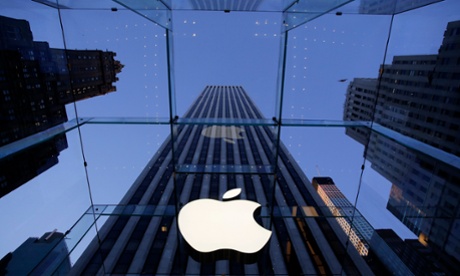
The term brand value gets bandied about as though its meaning is a given. We all know that Apple and Google have it, for example. Some of us (OK, mainly those of us who go on reality TV shows) even use it about ourselves. But what does it actually mean?
Hector Pottie is associate partner and creative director at branding company Prophet London. He explains: “In today’s world brands live or die on what they do. If the experience is poor then loyalty won’t last long. There’s lots of choice and the minute a brand isn’t giving me what I need I’m not likely to stick around.”
In layman’s terms, says Pottie, you would measure brand success through awareness, advocacy, loyalty and growth. Ask yourself: “Does the world know who you are and what you do? Is the world talking about you and recommending you? Do your customers and staff want to stick around? Are you growing financially or in your customer base?”
Thus far, these kinds of questions have been hard to quantify but WPP brand consultancy The Partners, along with Lambie-Nairn, Millward Brown and brand equity database BrandZ, have produced a financially quantified analysis of how brand-building activities drive growth in brand value. The Brand value growth matrix report states what consultancies have long been claiming and what we’ve all secretly known; that good branding pays financial dividends. The report has done this by calculating metrics including corporate earnings, attribution rates, branded earnings and financial value.
This much is easily quantifiable, however, and it’s not hard to see how the top 10 brands by value include Apple, Google, Microsoft and IBM in the first four spots. But the nuts and bolts of how to grow the value of a brand is not so obvious.
Why branding matters
The data suggests that good advertising is, by itself, insufficient and inefficient and needs to be underpinned by broader, deeper strategic and creative definitions. When you think about it, have you ever seen an advert for a Rolls-Royce?
Jason Hartley, head of strategy at The Partners, says: “Brand is so much more powerful to an SME. We spend a lot of time with large companies and you have to convince them what makes them special and then you have to go through a huge process of saying ‘this is what you’re all about’.”
With an SME, he says, you already know what you’re all about. “Take the tech sector, the idea of what your business does in tech is never enough. If it’s a good idea you can bet that a number of people are going to be on your back. So you differentiate through your brand,” he says.
Timing is everything
Hartley’s colleague and strategy director Uri Baruchin says it can be tempting to use some sort of placeholder and improve it later when you have more time and money. After all, this iterative approach works well with other aspects of your business.
Unfortunately, that’s not how branding works. Baruchin says: “Branding is a system of tools, not just pretty pictures. Too often, branding becomes the prima donna of the marketing suite. When that happens you get branding that sits in isolation at the top but leaves the dirty work to the sales team.”
You need pleasing visual entities that work hard across all channels (sales, point-of-sale, retail and digital), according to Baruchin.
“Many young businesses still approach their branding as if it’s going to live mostly offline and tell their story in a linear way (such as simply through text and TV, radio)”, he says. “Digital means so much more for your branding: it can move even within static moments. It demands non-linear storytelling and customer participation. It needs to be brutally simple and yet look differentiated.”
Company culture
One of the biggest branding challenges for SMEs is maintaining the culture, says Hartley. “You need to be sure that everyone knows this is what we stand for,” he says, “then new people are tied into the vision and they aren’t saying, ‘I think we should do it this way’.”
The sooner you establish the thing that makes you unique, the sooner you have a strategic path and an objective framework for decisions, explains Hartley.
In his view, SMEs have an advantage here. “The one thing you have is the agility and passionate energy. Don’t waste it in areas that aren’t going to help you grow.”
Baruchin cites Innocent Drinks as a great branding success story. He says: “Innocent was driven by its brand from day one. This simple, direct approach is consistent with nearly any action or aspect of their business, whether packaging, adverts, the charity activity or new product development. Everything is tied up by a unified sense of purpose driven by a clearly defined brand with a consistent design and tone of voice.”
Hartley agrees that this sense of purpose is key. “When we speak to companies and ask them what they are trying to achieve, we typically find it’s lower than what it should be. Or they limit it to sector: ‘We want to be the greatest luxury kitchen brand’.” Your brand, he says, “should be everything you are and the sort of people you want to be. It’s far bigger and the sooner you get people aligned to that, the easier it is.”
Sign up to become a member of the Guardian Small Business Network here for more advice, insight and best practice direct to your inbox.

